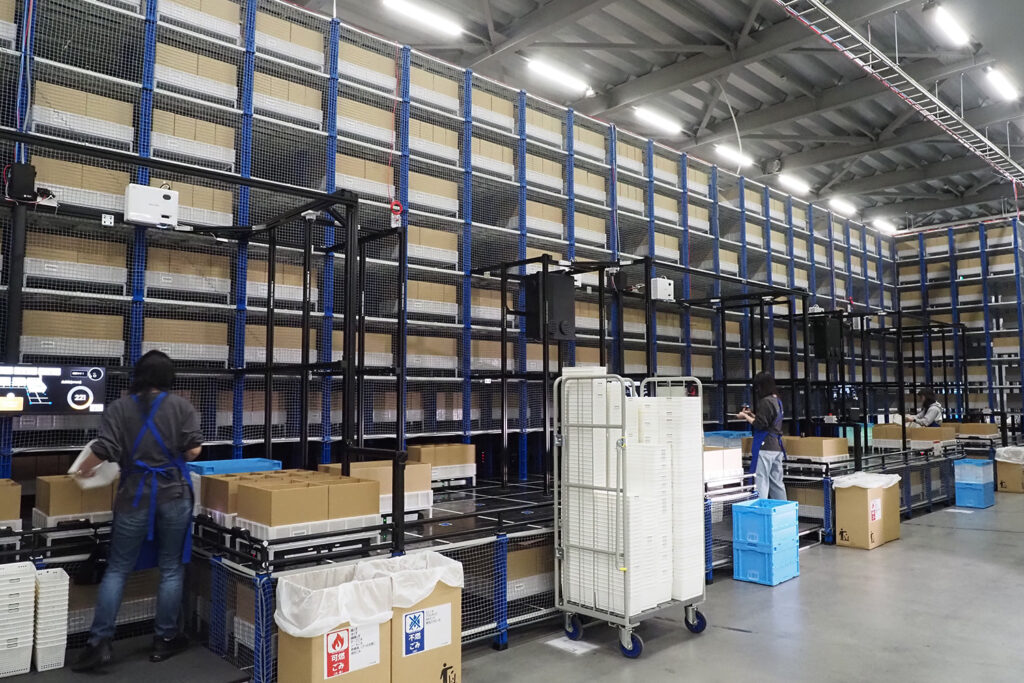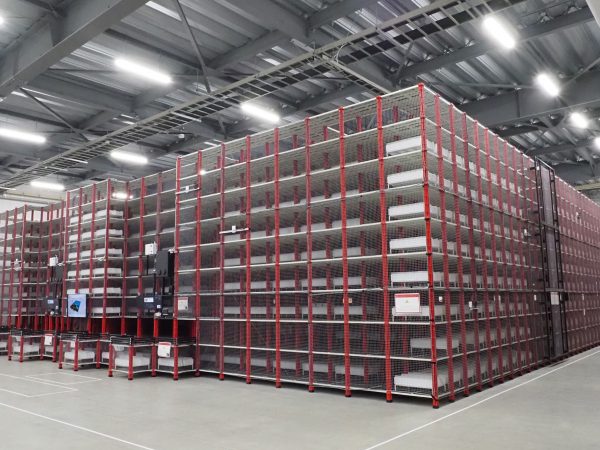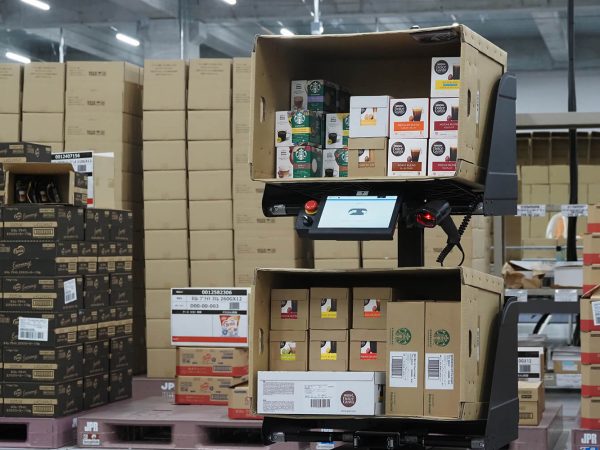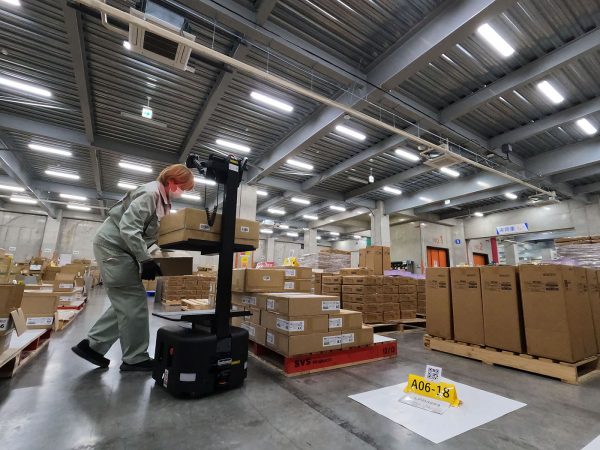Nippon Shuppan Hanbai Inc. (Nippan) is one of Japan’s largest book wholesalers, moving everything from books to stationery, office supplies, and licensed character merchandise. With multiple joint ventures and decades of expertise under their belt, the company was facing a familiar challenge: consolidating operations, cutting costs, and finding new revenue streams in a shrinking market.
Their answer? Close three legacy warehouses, build a state-of-the-art logistics hub called N-PORT Niiza, and use it as the foundation for a new third-party logistics business aimed at improving efficiency and margins across the books and stationery supply chain.
Here’s the twist: To automate their picking operation, Nippan selected Rapyuta ASRS – which at the time had zero live customer sites to show. This case study walks through why they took that risk, how the implementation went, and where things stand today.
Project Snapshot: N-PORT Niiza
- Location: Niiza, Saitama, Japan
- Business: Book & stationery wholesale, expanding into 3PL services
- Go-Live Date: October 2024
- Product Line: Stationery items
ASRS Configuration:
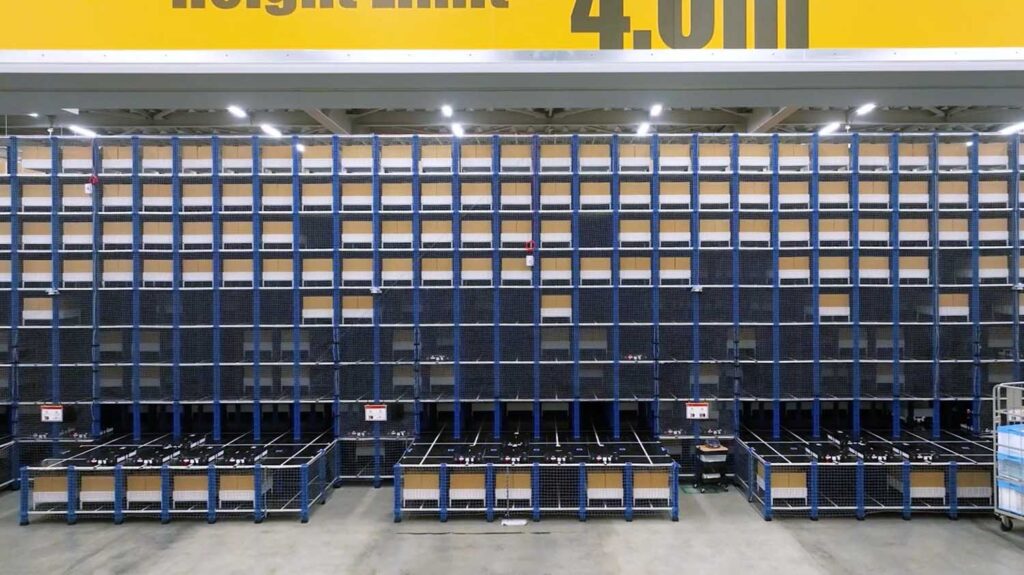
- Footprint: ~7,000 square feet
- Height: 9 levels
- Robots: 91 units
- Elevators (Lifts): 8 units
- Storage Bins: ~6,000
- Inbound Bins: ~300
- Outbound/Order Bins: ~50
- Picking Stations: 3 units
The Backstory: Building a New Business While the Old One Shrinks
Nippan’s bread and butter has always been print publications, but anyone in distribution knows that story, print volumes have been declining year over year. Rather than just managing that decline, Nippan decided to pivot: build a new logistics business by taking in third-party inventory and using consolidated delivery models to drive down costs and expand margins.
N-PORT Niiza was designed to be the showcase for this strategy, a facility that would demonstrate their ability to run lean, efficient operations that could scale profitably.
At the same time, they needed to tackle the labor problem. Japan’s demographics are brutal for warehouse operators: an aging population means fewer workers and rising labor costs. Nippan wasn’t trying to build a lights-out facility, but they did need to run the center with minimal headcount and free up their people for higher-value work that requires human judgment.
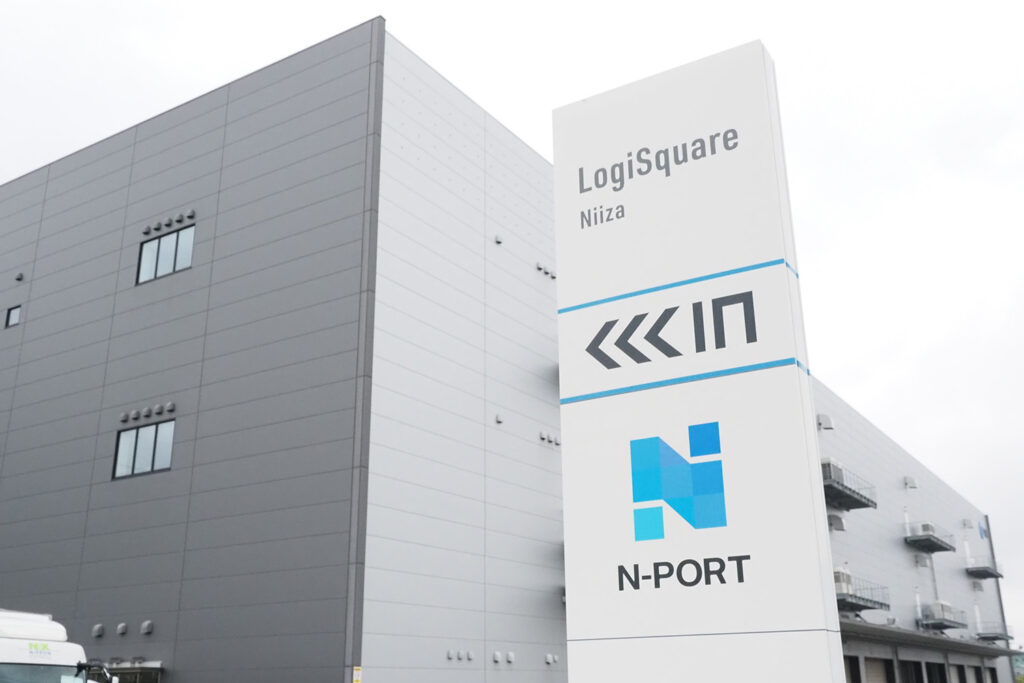
The Challenge: Labor Shortages and an Uncertain Market
Like many operators in aging markets, Nippan felt the pressure to automate quickly. Labor shortages weren’t a future problem, they were happening now. But the company wasn’t looking to eliminate people entirely. The goal was smarter: reduce headcount requirements where automation makes sense and redeploy staff to tasks where people add real value.
Yuta Okuma, General Manager of Logistics Planning, explains their approach:
“As we dug in, it became clear that robots are a core enabler of automation. Internally, we aligned on a vision of people and robots coexisting and collaborating to build a sustainable logistics operation. We defined requirements for the new center, issued an RFP, and reached out to roughly 30 vendors, from picking-assist robots and goods-to-person providers to sorters, digital assort systems, and WMS vendors to explore every viable option. We initially invited Rapyuta Robotics to propose their PA-AMR, but they also introduced a new product: the modular Rapyuta ASRS.”
“At first, we expected to focus on goods-to-person mobile shelf robots. But as we mapped our requirements, it became increasingly apparent that the Rapyuta ASRS was the better fit.”
The Decision: Betting on a System With No Track Record
Nippan’s picking requirements came down to four critical factors: storage density, picking throughput, robot uptime and stability, and overall ROI including payback period. Pretty standard stuff for any warehouse automation project.
The problem? At proposal time, Rapyuta ASRS had no live reference sites. Zero. How do you justify that kind of risk to leadership?
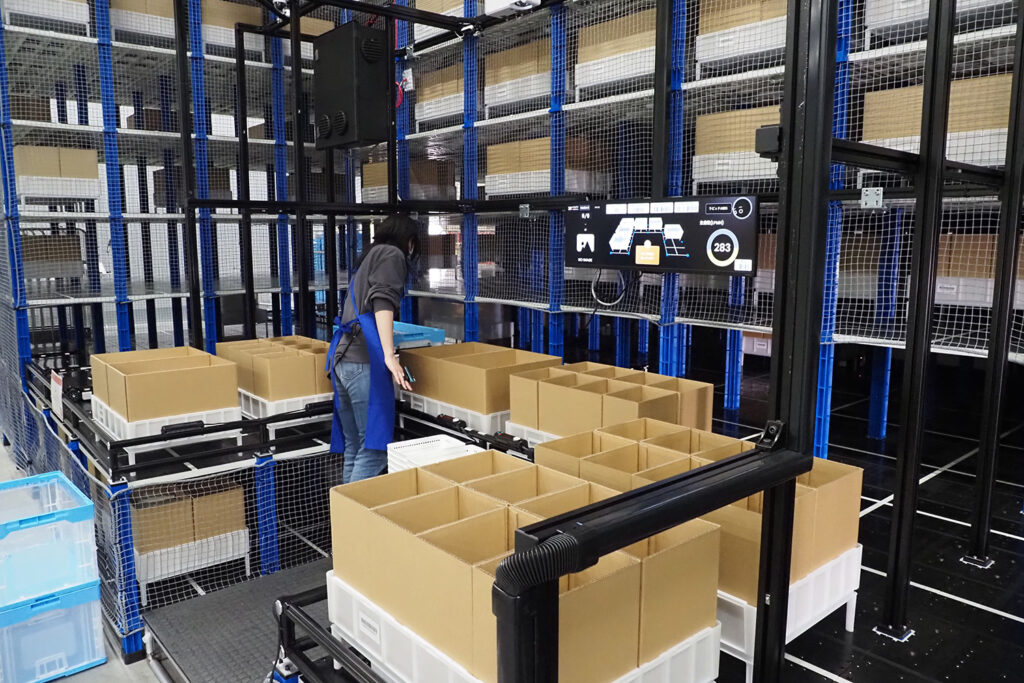
Noboru Shibata, Manager in the Logistics Planning Department, remembers the internal debate:
“Honestly, we wrestled with the decision. We narrowed it down to two finalists -Rapyuta ASRS and another solution and spent more than two months evaluating them. Because there were no reference sites, we asked both vendors for repeated demos. In the end, we felt Rapyuta ASRS offered a clear, unique advantage: it delivers high productivity while remaining highly adaptable thanks to its modular, ‘block-based’ design, which lets us reconfigure layouts even after go-live.”
That flexibility mattered. Unlike fixed conveyor-based systems or rigid shuttle systems, Rapyuta’s modular architecture meant Nippan could adjust the layout as their business evolved, critical for a company launching a new 3PL operation where customer requirements would inevitably change.
But the deciding factor wasn’t just the technology. It was the partnership model.
“Another key factor was Rapyuta’s emphasis on co-creation. Instead of ‘deliver the ASRS and we’re done,’ they proposed partnering with us until we achieved our productivity targets – building new solutions together along the way. We’re aiming to regain momentum and make N-PORT Niiza a winning operation, so seeing Rapyuta as a partner willing to run alongside us was a major reason we chose the Rapyuta ASRS.”
Mr. Okuma adds:
“The other finalist was already on the market, with plenty of reference cases and clearly defined catalog specs. In that sense, it was the ‘safe’ choice. But our former division head, who has since stepped down, pushed us to ‘take the challenge,’ which made executive approval much easier. Rather than pushing back, leadership encouraged us: ‘If anything, you should roll up your sleeves and build this together with Rapyuta.’ That challenger mindset and positive stance from the top were huge factors.”
It’s worth noting how rare that is. Most operations teams get pressured to pick the safe vendor with dozens of installations under their belt. Nippan’s leadership gave them permission to take a calculated risk and backed them on it.
The Implementation: Testing Everything from Scratch
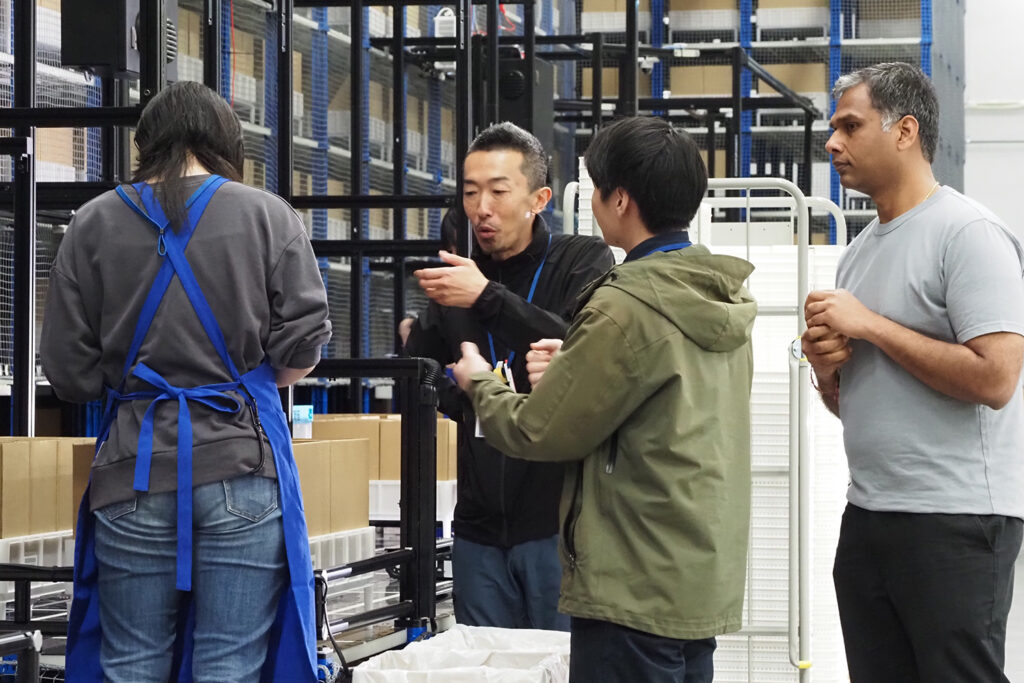
Without existing deployments to learn from, Nippan and Rapyuta had to test everything. Moeka Ogata from Nippan’s Logistics Planning Department remembers the grind:
“Because there were so few real-world deployments, testing was tough. On paper, our requirements looked solid, we thought, ‘this should work.’ But once we started running things on the floor, we ran into lots of small gaps between our assumptions and reality, and bridging those gaps took daily trial and error. One test I remember vividly was the induction process, where we actually loaded inbound items into bins. You scan the incoming SKU with a handheld device, link it to the bin barcode, and then store it. Our pre-storage workflow didn’t fully match how Rapyuta ASRS actually operates, so we kept moving the same test items again and again to gradually align the process.”
Mr. Shibata, who led the project alongside Ogata:
“Beyond the induction, we also had to verify whether the robots would behave exactly as expected—and that was no small task. Today, 91 robots moves fluidly throughout the Rapyuta ASRS, but at the time it was uncharted territory. I believe the reason things now run so smoothly is because we tested everything so rigorously back then.”
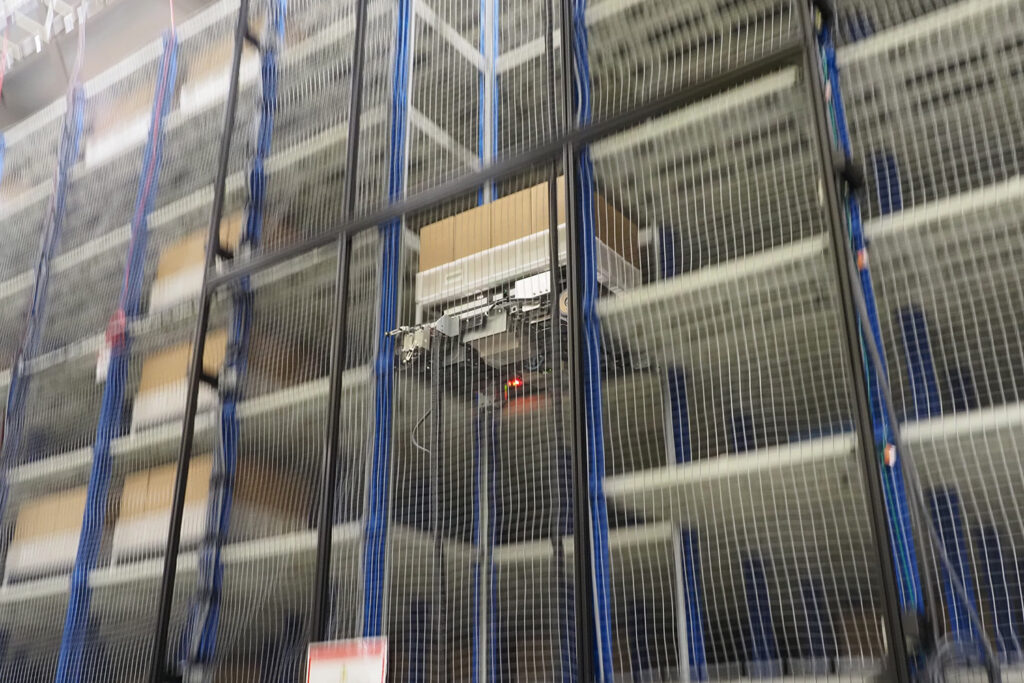

Even after going-live in October 2024, Rapyuta’s engineers stayed on site, not for a week or two, but for months. They continuously updated the control system, tuning robot control logic to address issues that only surfaced under real-world conditions, stabilizing throughput, and making hardware adjustments as needed.
By October 2025, a full year after launch the operation was consistently running close to original performance targets.
The Results
Let’s talk about numbers. Nippan’s target was 400 order lines per hour. Are they hitting it consistently? Not yet.

Mr. Shibata is candid about where they stand:
“To be honest, we haven’t yet reached the target of 400 order lines per hour. That said, part of the gap stems from demand in the B-rank SKU area not evolving as originally expected. We’re now discussing in our regular review meetings on how to raise throughput against the target, including how we can better leverage the system on our side. On labor savings, we’re confident that we can hit our goals as productivity improves.”
So, what is the path forward?
Mr. Shibata:
“Yes, we can clearly see a path. In our daily discussions with Rapyuta, we’ve aligned on specific milestones and timelines. We’re optimistic.”
Mr. Okuma provides more detail on their strategy:
“As we’ve operated the system, we’ve learned how to draw out more of Rapyuta ASRS’s potential. We’re testing which SKUs to store to achieve 400 order lines per hour, and our current hypothesis is that we should place more fast-moving SKUs – our ‘S’ and ‘A’ ranks—into the ASRS. Up to now, we kept S/A items in a separate manual picking area and assigned long-tail ‘B-rank’ items to the ASRS, partly as a risk hedge in case of system issues. If both floors’ SKUs lived only in the ASRS, any unexpected outage could stall all downstream processes, so we would deliberately split solutions.”
“However, with real operations underway, we’ve seen that Rapyuta ASRS excels at handling small items, and we now believe placing high-frequency goods, like popular notebooks in the ‘A’ rank, into the ASRS will be even more efficient. That would keep bins near the stations cycling faster, which is where Rapyuta ASRS can truly shine.”
This is a smart operational insight: they initially de-risked by putting slower-moving B-rank SKUs in the ASRS and keeping fast movers manual. Now that they’ve validated system reliability, they’re ready to flip that strategy and use the ASRS for what it does best rapid cycling of high-velocity items.
What This Means for Warehouse Operators

Nippan’s experience offers several takeaways for anyone evaluating ASRS or automation projects:
1. Modularity matters when your business is changing. Nippan wasn’t just upgrading an existing operation, they were launching a new 3PL business. Being able to reconfigure the ASRS layout post-installation gave them flexibility that fixed systems can’t match.
2. Partnership models can offset technological risk. Rapyuta didn’t just install and walk away. Their engineers stayed on site, tuning performance and addressing real-world issues. That level of support helped Nippan close the gap between design and operational reality.
3. SKU slotting strategy evolves. Nippan’s initial approach was putting B-rank items in the ASRS as a hedge which made sense at launch. But operational experience revealed that the system performs best with fast movers. That kind of learning only happens after go-live.
4. Perfect isn’t the enemy of good. They’re not at 400 lines per hour yet, but they have a clear path to get there. The system is stable; labor savings are on track, and they’re actively optimizing. That’s a successful automation project, even if it’s not hitting every target on day one.
What’s Next
Rapyuta Robotics engineers continue working with Nippan on site, stabilizing and sustaining target productivity through ongoing tuning of control logic, operational refinement, and configuration updates. The goal remains the same: help Nippan successfully ramp up their new 3PL business line powered by Rapyuta ASRS.

The performance gap Nippan is working through, reaching that 400 line-per-hour target, represents exactly the kind of real-world optimization opportunity that shows up in every automation deployment. The difference here is that both companies are treating it as a joint problem to solve, not a contract dispute.
Stay tuned for future updates from the N-PORT Niiza project as Nippan continues refining their operation and Rapyuta continues building on the lessons learned from this first large-scale deployment.
